Have you ever wondered why treflips flip?
How do you pop shove-it? The trick itself might look simple but I used to hate this trick. That is because I always had this problems that I landed primo , landed one footed ,landed on the heel side or my board flew away etc.
We could always start talking about "how to avoid flipping the board," for example, but first, and for the last time, let's structurally break down the trick, instead of focusing on only one specific aspect of it. This might not be the last time though.
In this video, so that I can give you something informational, I will be presenting quick tips along with individual aspects of the trick. So please stay tuned until the end.
Summary
Step 1: Foot Placement
- Does it even really cause spin?
- People say different things about this. How do I avoid letting it flip.
- "Which part of your board hits the ground?" is even more important.
Step 2: Weight Distribution
- May have stronger effect on spin since when you try to jump with your weight on the toe side, you will eventually push your board toward the heel side.
- Can be effective to keep your board under you because your board lands on your toe side with or without your body going toward that direction.
Step 3: Pop
- Do I pop straight down or do I scoop? You may scoop if you want to but due to the said reason above, you might not really have to to complete the shove it rotation
Step 4: Use of upper body
- Should I try to jump as high as possible? No. Try not to jump up too high instead. This is because as you do so, you will be wasting precious energy that can push down on your board for nothing.
Simulation
Introduction
What is a pop shove it?
So that we can sort out what it takes to pop shove it, let's review how to pop shove it according to the timeline.
Just like everyone knows, basically it's all about pop and shove so the board does 180 degrees spin. Indeed it looks simple.
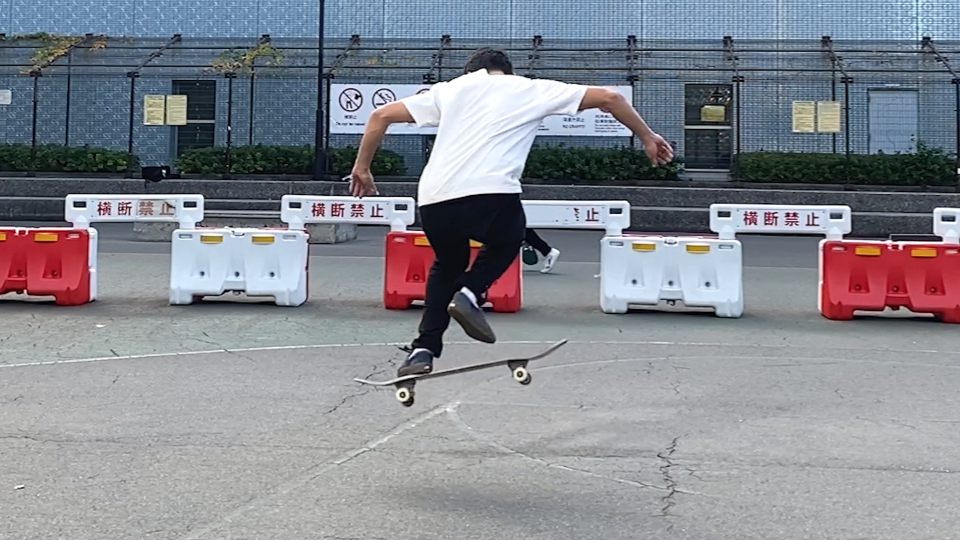
It's simple. Does it mean we simply have to commit?
If I pick up factors that stand out, this is a result of the breakdown. Without being able to breakdown this trick more in detail, the only thing you could advise someone to do is to commit. You may all as many times as you have to and let your body memorize the movement.
That is not wrong. But I personally don't really appreciate it when people have to say that.

Break Down #1 Foot placement
Does it even matter?
Starting from the foot placement. Some people say you should put your backfoot in the pocket so you can spin our your board more effectively, while others say you have to put it right in the center of the tail so your board doesn't flip.
This is leading to this question:
- Does the foot placement really matter in terms of spinning the board?
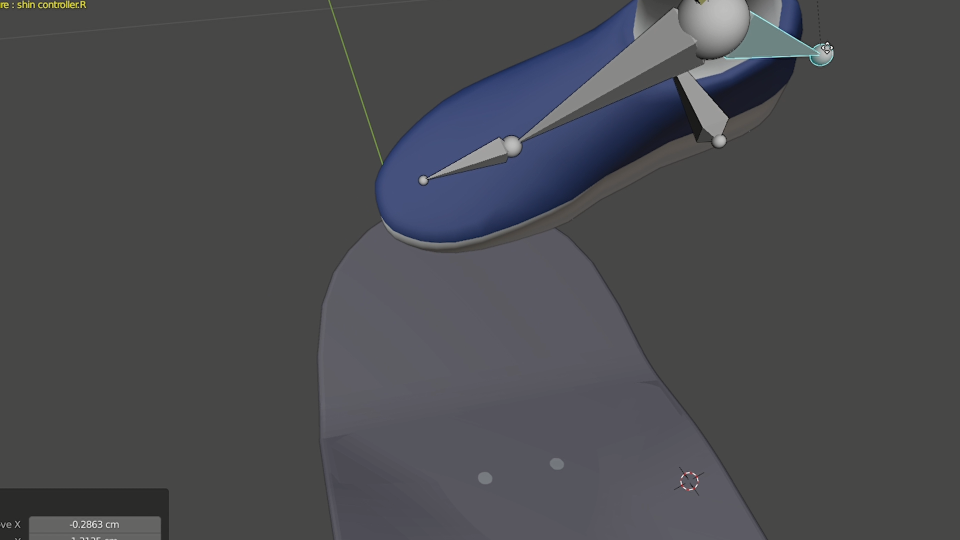
Foot Placement
Another important element. In the previous video, I said my type of treflips are products of rebound, or my rear truck trying to go back to its neutral position after being bent down.
Generally, to pop shove-it, we put our backfoot in the pocket. And it may become easier to spin our boards but it also becomes easier to unwillingly flip them 'cause by putting our back foot in the pocket, we end up storing energy in the rear truck, which eventually flips the board when it's released.
- In fact, the same thing can be said in my pop shove-its too. It looks like I'm actually squeezing my rear truck. So why does it NOT flip?
- Plus, although landing primo is a common problem in pop shove its, do we even know why our boards flip? Is it really because of the foot placement? Really?
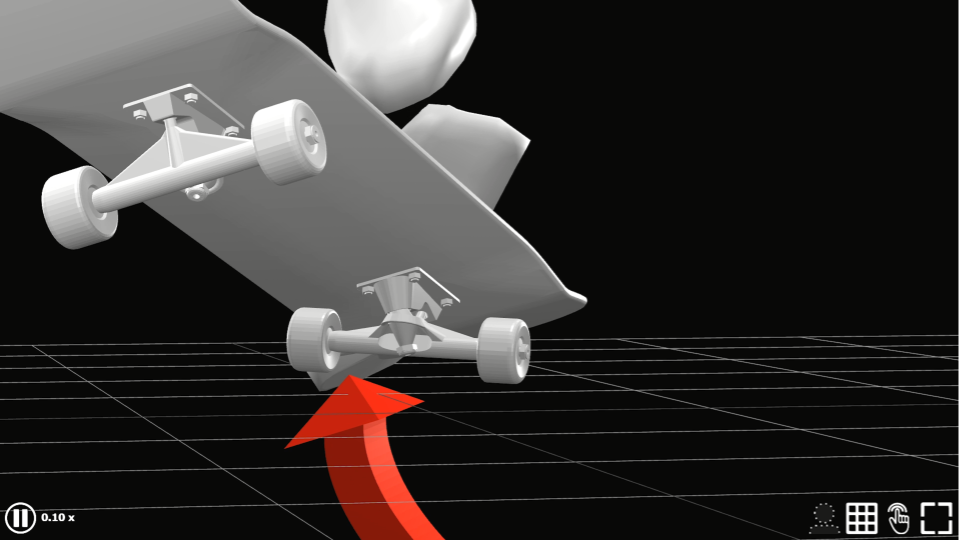
Quick tip
All these questions can be answered by thinking about one thing: "Which part of the board has the final contact with the ground?"
Simply put, if you can let the tip of the tail hit the ground, the energy that is stored in the rear truck will be dispersed into the air without having to push the ground.
The only thing you have to do is to find a way to make THAT happen. Let's talk about how to do it in detail in the next videos.
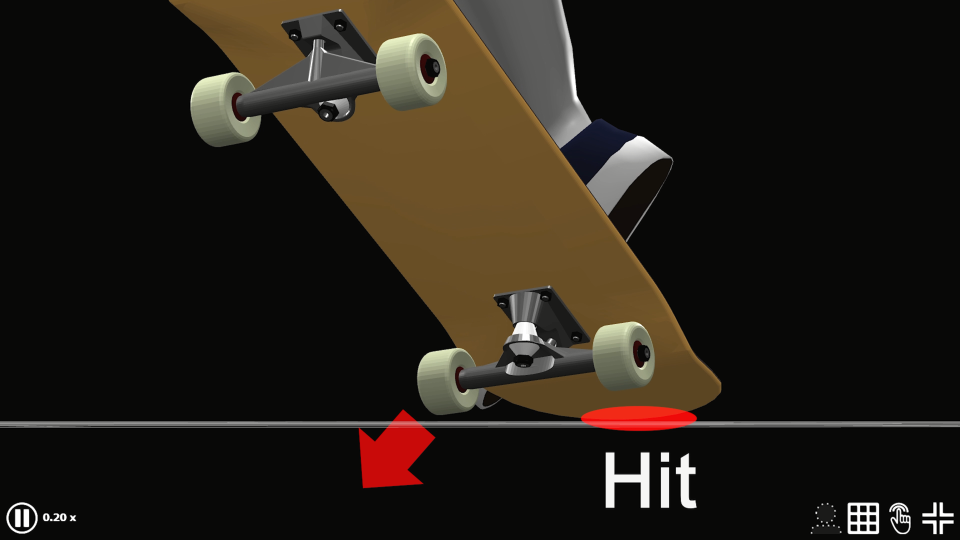
Break down #2 Weight Distribution
Why does it fly away?
Now that we have classified elements and problems that are related to the foot placement, let's move on to the next item, which is the weight distribution.
Generally, in pop shove its, it is difficult to keep our boards under feet. If you can't, there might be something wrong with your weight distribution and the way you pop.
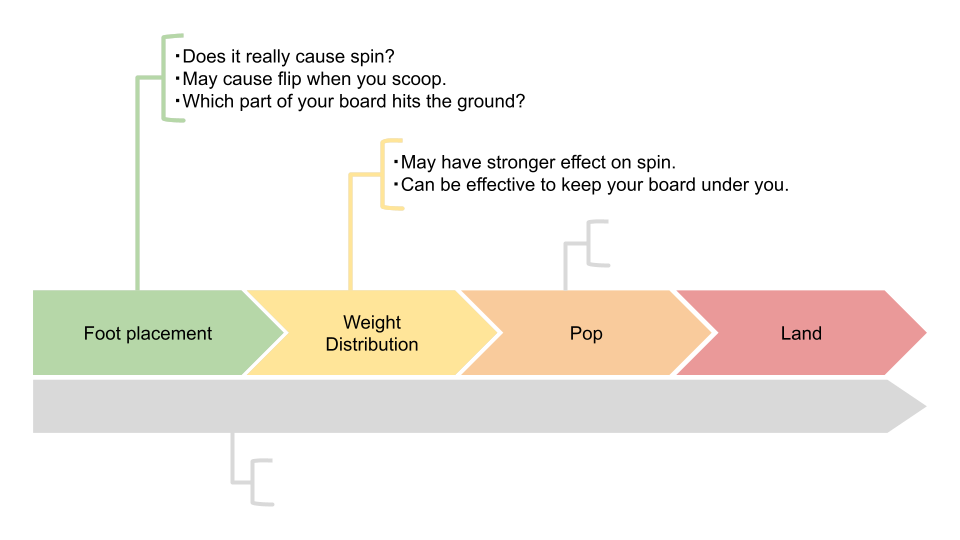
How can I stay above it?
It is widely understood our boards land on our toe side in pop shove-its. This is because as we pop, this wheel becomes a sort of pivot point and swings the center of gravity of our boards outward by 20-30 cm.
Now the question is
- how can you land back on your deck?
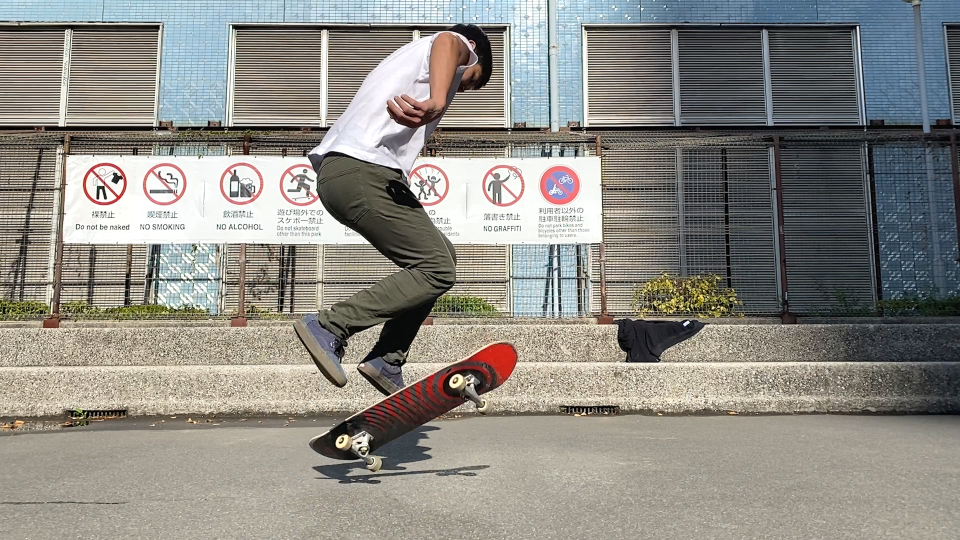
Quick tip
- As I mentioned before, if you place your weight on the toe side before jumping, you can both spin the board and jump forward without even having to think about it.
- This is because if the center of gravity of your body is located on the toe side relative to your board, as you pop, your legs will be pushing the tail to the heel side. And as you do so, your body will correspondingly be launched toward the toe side.
- Plus, with or without your body going toward the toe side, your board will land on your toe side. So why not find a way to stay above it?
- That makes the only thing you have to do is to find out how far you should shift your weight toward the toe side. However, you don't want to do it too much though. 'cause sometimes, it messes with your pop.
- Once again, we will be talking about this in detail in the future videos.
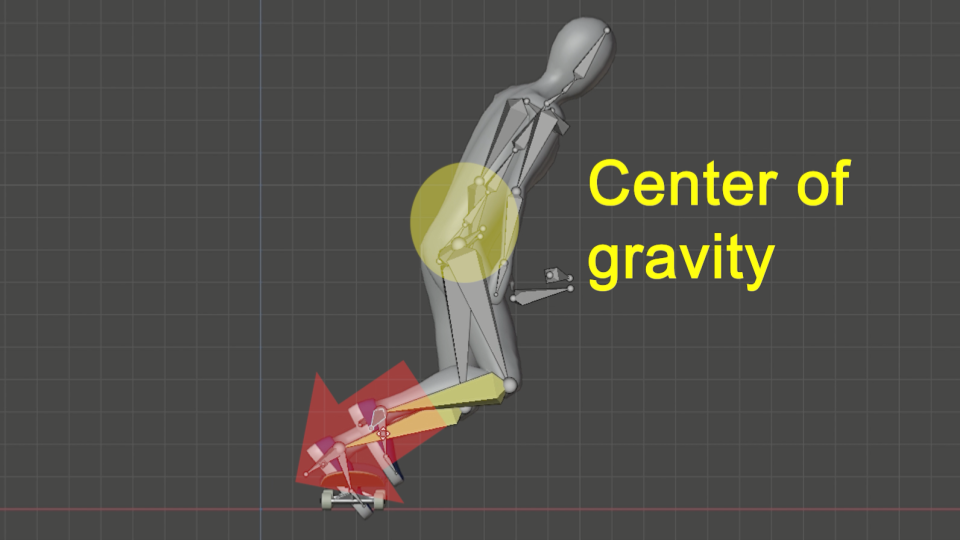
Break down #3 Pop
Do you really have to pop that hard?
Needless to say, we also have to talk about how to pop.
It is commonly said you have to pop and scoop at the same time. Because regular shove-its and pop shove-its work in slightly different ways, I believe some things are misunderstood. For example, considering all those things we have been talking about, you might not have to scoop as hard as you might think you do.
Although I'm not saying my way is correct or anything, I may be able to give you a different perspective.

Break down #4 Use of upper body
This inevitably assembles everything.
Lastly, something that combines them together: the use of upper body.
Aside from the angle of shoulders, which in my case is wide open, there is a bigger element we should pay attention to. And that is the elevation of our bodies. Sometimes, especially when you are starting out, even after doing everything you can do, your board wouldn't spin no matter what you do. If that's happening to you, the elevation may hold the answer.
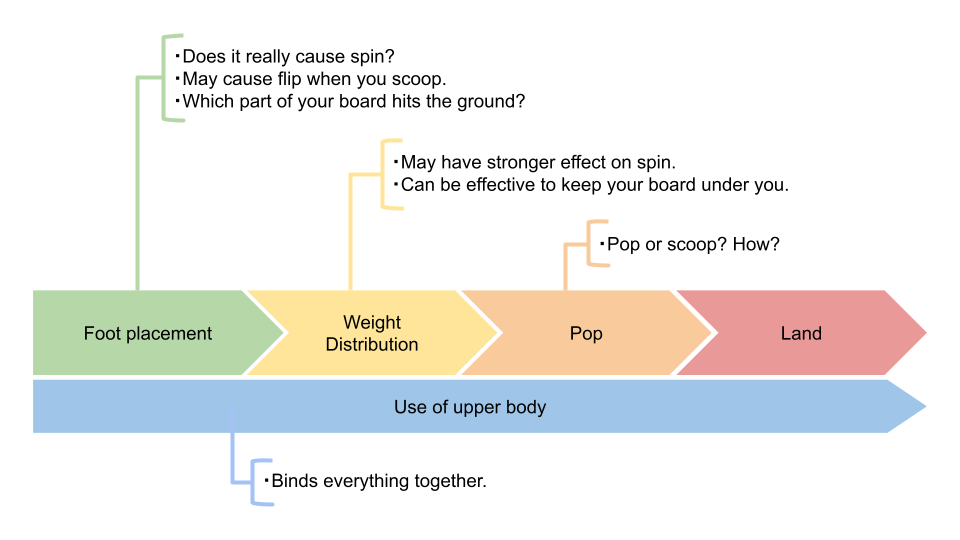
Quick tip
- Let me ask you a question this time, do you think you can even pop when you're jumping up a meter high?
- When your upper body brings your feet up into the air before your backfoot has a chance to pop properly, your effort to jump up means nothing in terms of doing this trick.
- So, try to think about the difference between jumping up and raising your feet while keeping your upper body at the same height.

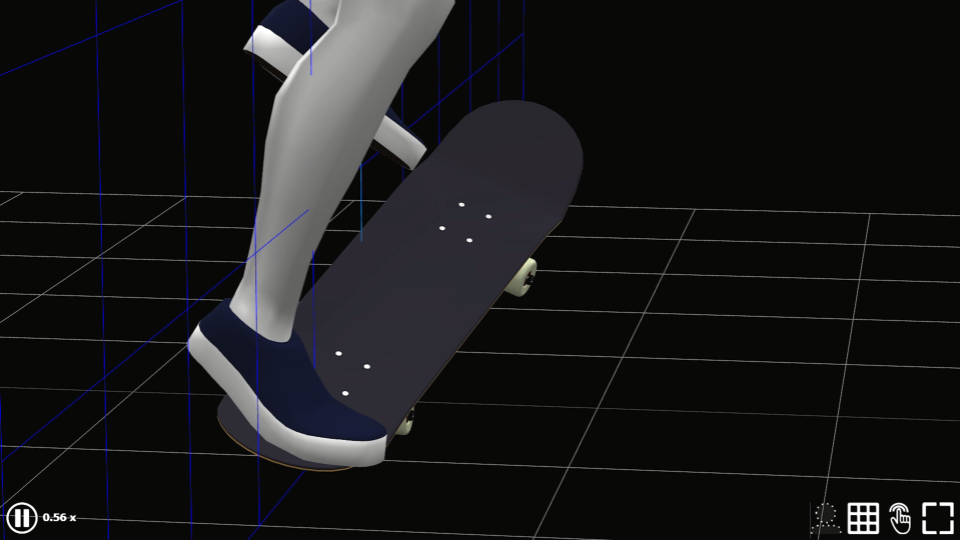

 Convert your video into 3D
Convert your video into 3D Facebook
Facebook Twitter
Twitter

